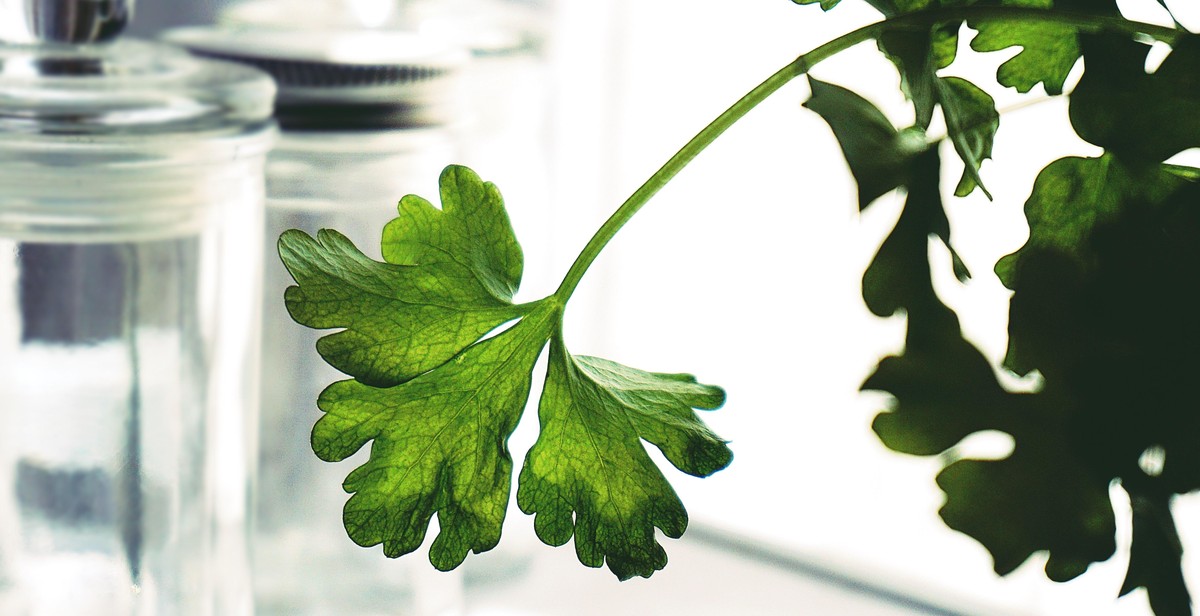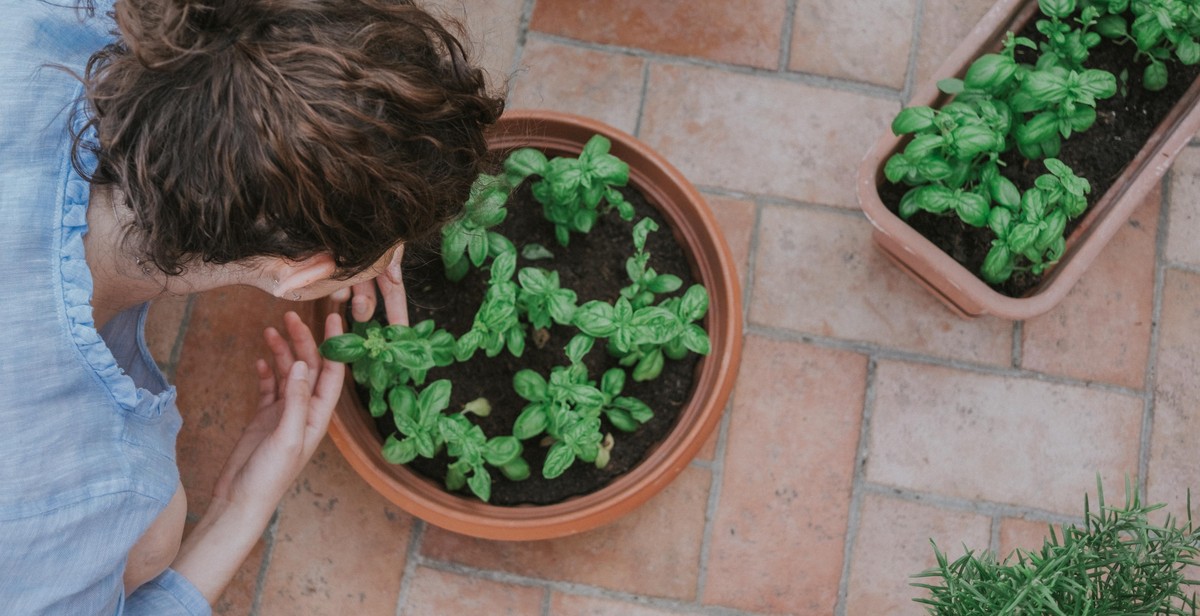How to Build a Vertical Herb Garden: Growing Fresh Herbs in a Small Space
Are you looking to grow fresh herbs but don’t have a lot of outdoor space? A vertical herb garden may be the perfect solution for you. Not only does it allow you to grow a variety of herbs in a small space, but it also adds a beautiful and functional element to your home or garden.
Building a vertical herb garden may seem like a daunting task, but with the right materials and a little bit of know-how, it can be a fun and rewarding project. In this article, we will guide you through the process of building your own vertical herb garden, from choosing the right location to selecting the best herbs to grow.
Why Choose a Vertical Herb Garden?
Vertical herb gardens are a great way to maximize your growing space, especially if you have limited outdoor space. They can be built in a variety of sizes and styles to fit your specific needs and can be easily customized to fit any decor style.
In addition to their space-saving benefits, vertical herb gardens also offer a number of other advantages. They can help improve air quality, reduce noise pollution, and even provide insulation to your home or garden.
Choosing the Right Location
Before you start building your vertical herb garden, it’s important to choose the right location. You’ll want to select an area that receives plenty of sunlight and is easily accessible for watering and harvesting.
Consider the size of your garden and the types of herbs you want to grow when choosing a location. If you’re building a large garden, you may need to choose a space that is away from other structures or plants to ensure that your herbs receive enough sunlight and air circulation.
Choosing the Right Location
When it comes to building a vertical herb garden, choosing the right location is crucial to the success of your herbs. Here are two factors to consider:
Assessing Your Space
The first step in choosing a location for your vertical herb garden is assessing your available space. Since you’re building a vertical garden, you don’t need a lot of horizontal space. However, you do need enough vertical space to accommodate the height of your herbs. You’ll also want to consider the weight of your garden and ensure that the wall or structure you plan to mount it on can support it.
Determining Sunlight Needs
The second factor to consider when choosing a location for your vertical herb garden is the amount of sunlight your herbs will receive. Most herbs require at least 6 hours of sunlight per day, so you’ll want to choose a location that gets plenty of sun. If you don’t have a spot that gets enough sun, you can use grow lights to supplement the natural light.
It’s also important to consider the direction your chosen location faces. South-facing walls will receive the most sunlight, while north-facing walls will receive the least. East-facing walls will receive morning sun, and west-facing walls will receive afternoon sun.
| Direction | Amount of Sunlight |
|---|---|
| North | Least |
| East | Morning Sun |
| South | Most |
| West | Afternoon Sun |
By assessing your space and determining your herbs’ sunlight needs, you’ll be able to choose a location that will help your vertical herb garden thrive.

Selecting the Right Herbs
When it comes to building a vertical herb garden, selecting the right herbs is crucial. Not all herbs are suitable for small spaces, so it’s important to consider your cooking needs and choose herbs that thrive in such environments.
Consider Your Cooking Needs
Before selecting herbs for your vertical garden, think about the types of dishes you typically prepare. Do you cook a lot of Italian cuisine? Then, you’ll want to include herbs like basil, oregano, and thyme. If you enjoy Asian dishes, consider growing herbs like lemongrass, cilantro, and mint. By selecting herbs that align with your cooking needs, you’ll be more likely to use them and enjoy the benefits of a fresh herb garden.
Choosing Herbs That Thrive in Small Spaces
When it comes to small space gardening, not all herbs are created equal. Some herbs require more space to grow than others, so it’s important to choose herbs that thrive in small spaces. Here are some of the best herbs for vertical gardens:
- Basil: This herb is a staple in many kitchens and does well in small spaces. It’s also easy to grow from seed or cuttings.
- Cilantro: Cilantro can be grown in small pots and is perfect for adding to fresh salsas and other Mexican dishes.
- Mint: Mint is a fast-growing herb that does well in small spaces. It’s perfect for adding to drinks and desserts.
- Parsley: Parsley is a versatile herb that can be used in a variety of dishes. It does well in small pots and can be grown from seed or cuttings.
By choosing herbs that thrive in small spaces, you’ll be able to maximize your vertical garden’s potential and enjoy fresh, homegrown herbs all year round.

Building Your Vertical Garden
Choosing a Container
When it comes to building a vertical herb garden, you have a lot of different container options to choose from. Some popular choices include:
- Hanging baskets
- Pallets
- Wall planters
- Window boxes
- Stackable planters
When selecting your container, consider the amount of space you have available, the amount of sunlight your herbs will need, and the overall aesthetic you are going for.
Preparing the Container for Planting
Once you have selected your container, it’s time to prepare it for planting. Here are the steps to follow:
- Drill drainage holes in the bottom of your container to prevent water from pooling and causing root rot.
- Fill your container with a high-quality potting mix that is enriched with organic matter and nutrients.
- Consider adding a layer of gravel or sand to the bottom of your container to improve drainage.
Planting Your Herbs
When it comes to planting your herbs, there are a few things to keep in mind:
- Choose herbs that are well-suited to your climate and the amount of sunlight your container will receive.
- Consider planting herbs that have similar water and nutrient requirements together.
- Make sure to plant your herbs at the appropriate depth and spacing, following the instructions on the seed packet or plant label.
- Water your herbs regularly and fertilize them as needed to promote healthy growth.
| Container Type | Pros | Cons |
|---|---|---|
| Hanging Baskets | Easy to hang and move, good drainage | May dry out quickly, limited space for roots |
| Pallets | Can be used horizontally or vertically, affordable | May require additional support, limited space for roots |
| Wall Planters | Can be used indoors or outdoors, space-efficient | May be more difficult to water and maintain |
| Window Boxes | Easy to install, good drainage | May dry out quickly, limited space for roots |
| Stackable Planters | Can be stacked to save space, good drainage | May require additional support, limited space for roots |

Caring for Your Vertical Herb Garden
Vertical herb gardens require a bit more care and attention than traditional herb gardens. However, with the right techniques, you can easily maintain a healthy and flourishing garden of fresh herbs.
Watering Your Herbs
Watering is one of the most important aspects of caring for your vertical herb garden. Since water tends to drain quickly from vertical gardens, you should water your herbs at least once a day, preferably in the morning or late afternoon.
Make sure to water the soil and not the leaves to avoid fungal growth. Also, avoid overwatering as it can lead to root rot and other plant diseases.
Fertilizing Your Herbs
Fertilizing your herbs is essential to keep them healthy and productive. You can use organic fertilizers or compost to provide your plants with the necessary nutrients.
Apply the fertilizer once a month during the growing season. Avoid fertilizing during the winter months as the plants are dormant and do not require extra nutrients.
Pruning Your Herbs
Pruning is necessary to keep your herbs in good shape and encourage new growth. Remove any dead or yellow leaves, stems, or flowers regularly.
You can also pinch the tips of the stems to promote bushier growth and prevent legginess. Pruning also helps to keep the plants from becoming too large and overwhelming your vertical garden.
By following these tips, you can ensure that your vertical herb garden stays healthy and productive, providing you with fresh herbs all year round.

Harvesting Your Herbs
Harvesting your herbs is an essential part of the growing process. Knowing when to harvest your herbs will ensure that you get the most flavor and nutrients from your plants.
Knowing When to Harvest
The timing of harvesting your herbs depends on the type of herb you are growing. Most herbs are at their best when harvested just before they flower. This is when the essential oils that give the herbs their flavor and aroma are at their peak.
Here are some general guidelines for harvesting some common herbs:
- Basil: Harvest leaves when the plant is about 6 inches tall. Pinch off the top 2-3 sets of leaves, leaving a few sets of leaves on the plant to continue growing.
- Mint: Harvest leaves when the plant is about 4-6 inches tall. Pinch off the top 2-3 sets of leaves, leaving a few sets of leaves on the plant to continue growing.
- Parsley: Harvest leaves when the plant has at least 3 sets of leaves. Cut the outer stems off at the base of the plant, leaving the inner stems to continue growing.
- Thyme: Harvest stems when the plant is about 6-8 inches tall. Cut off the top 2-3 inches of stems, leaving a few inches of stems on the plant to continue growing.
It’s important to not harvest more than one-third of the plant at one time. This will allow the plant to continue growing and producing more herbs.
Harvesting your herbs regularly will also help to keep your plants healthy and prevent them from becoming too woody or leggy.
| Herb | Harvesting Guidelines |
|---|---|
| Basil | Harvest leaves when the plant is about 6 inches tall. Pinch off the top 2-3 sets of leaves, leaving a few sets of leaves on the plant to continue growing. |
| Mint | Harvest leaves when the plant is about 4-6 inches tall. Pinch off the top 2-3 sets of leaves, leaving a few sets of leaves on the plant to continue growing. |
| Parsley | Harvest leaves when the plant has at least 3 sets of leaves. Cut the outer stems off at the base of the plant, leaving the inner stems to continue growing. |
| Thyme | Harvest stems when the plant is about 6-8 inches tall. Cut off the top 2-3 inches of stems, leaving a few inches of stems on the plant to continue growing. |
Conclusion
Building a vertical herb garden is an excellent way to grow fresh herbs in a small space. It not only saves space but also adds beauty to your home. By following the steps mentioned above, you can easily build a vertical herb garden and enjoy fresh herbs in your meals.
When choosing the location for your vertical herb garden, make sure it receives enough sunlight and is easily accessible for watering and harvesting. Also, consider the type of herbs you want to grow and their specific requirements for light and water.
Using the right soil mix and planters is crucial for the successful growth of herbs in a vertical garden. Make sure to choose a well-draining soil mix and planters with adequate drainage holes to prevent waterlogging.
Regular pruning and maintenance are essential to keep your vertical herb garden healthy and productive. Pinching off the tips of the stems and removing any dead or yellowing leaves can help promote new growth and prevent disease.
By following these tips, you can build a beautiful and productive vertical herb garden that will provide you with fresh, flavorful herbs all year round.
